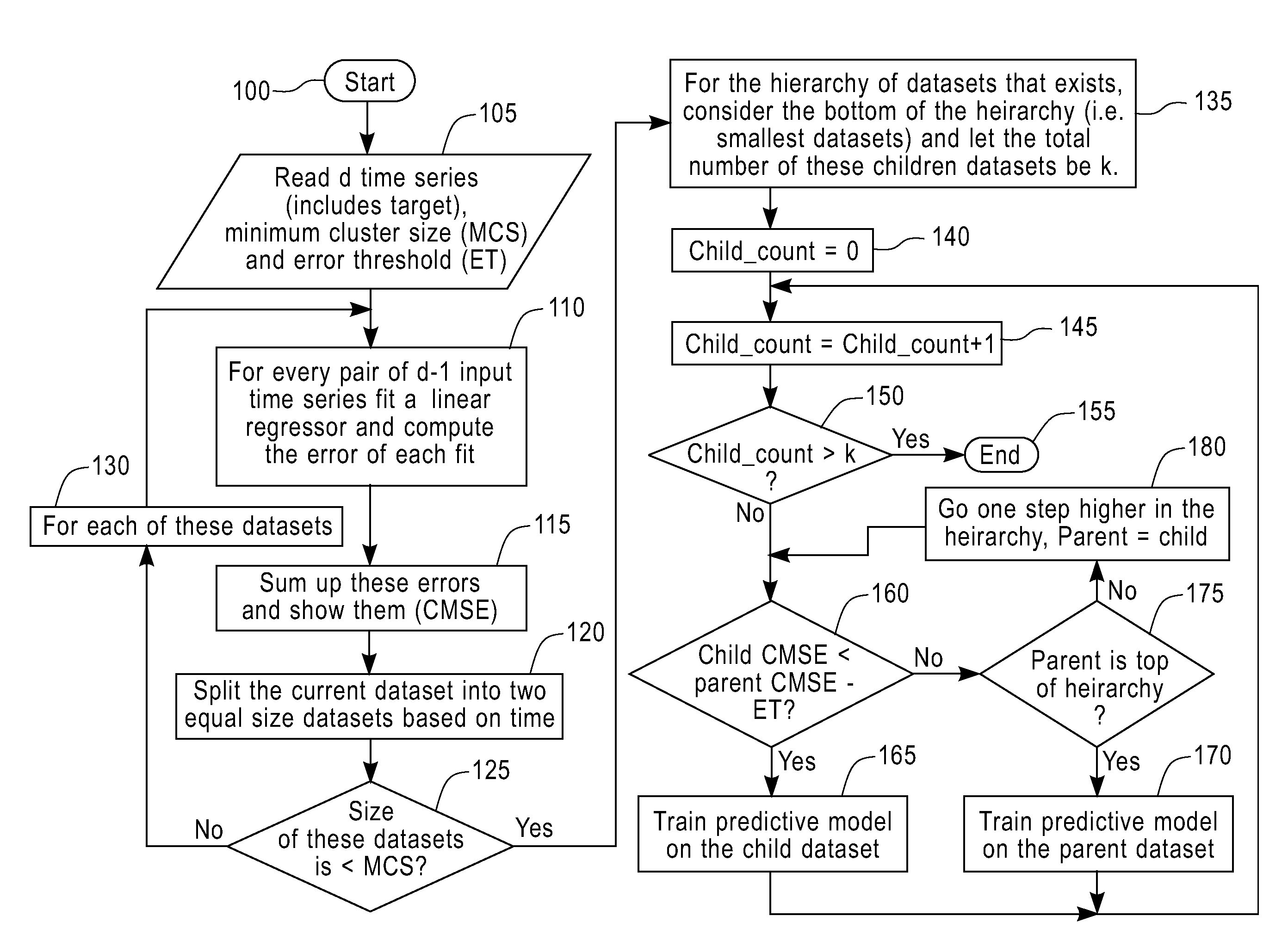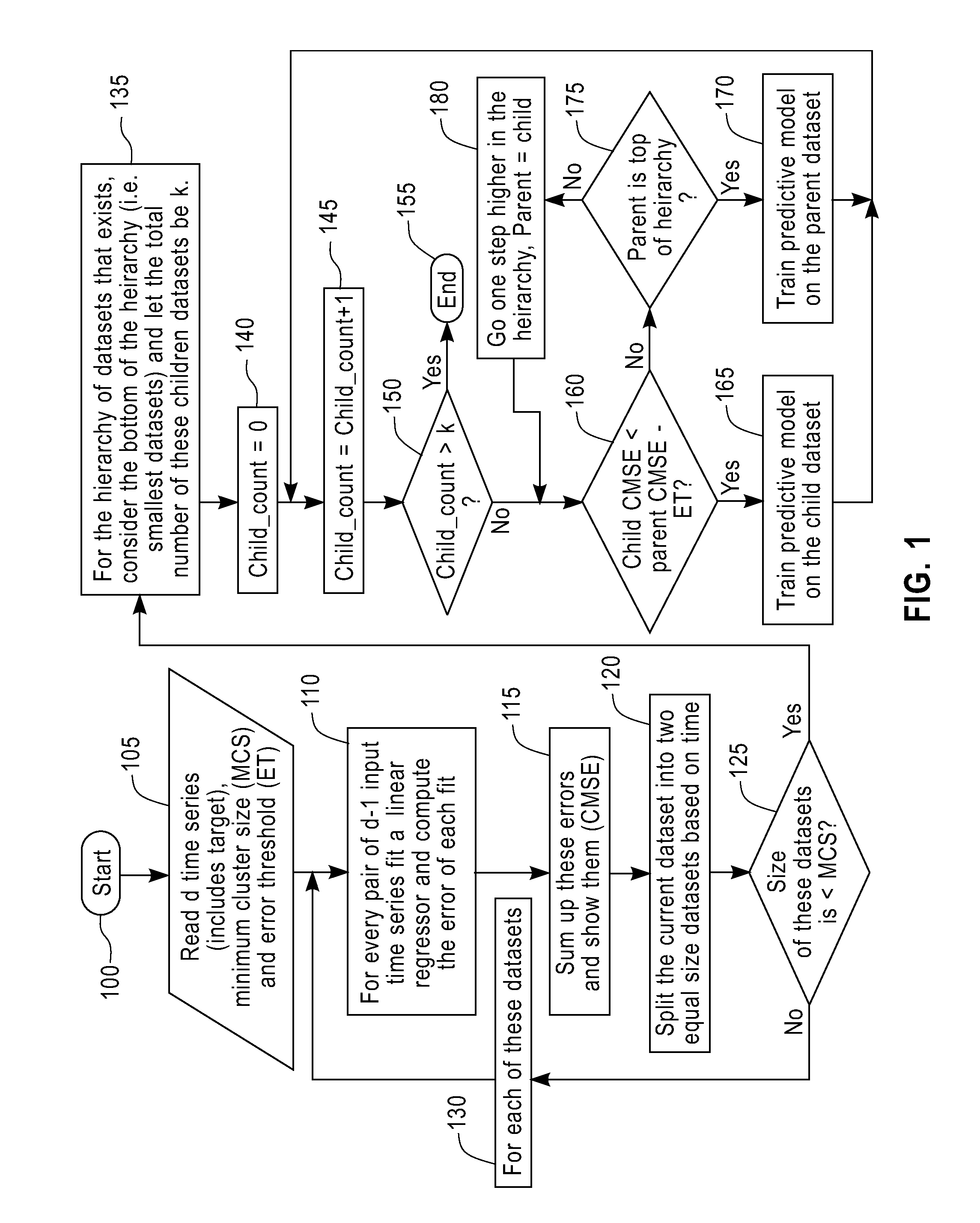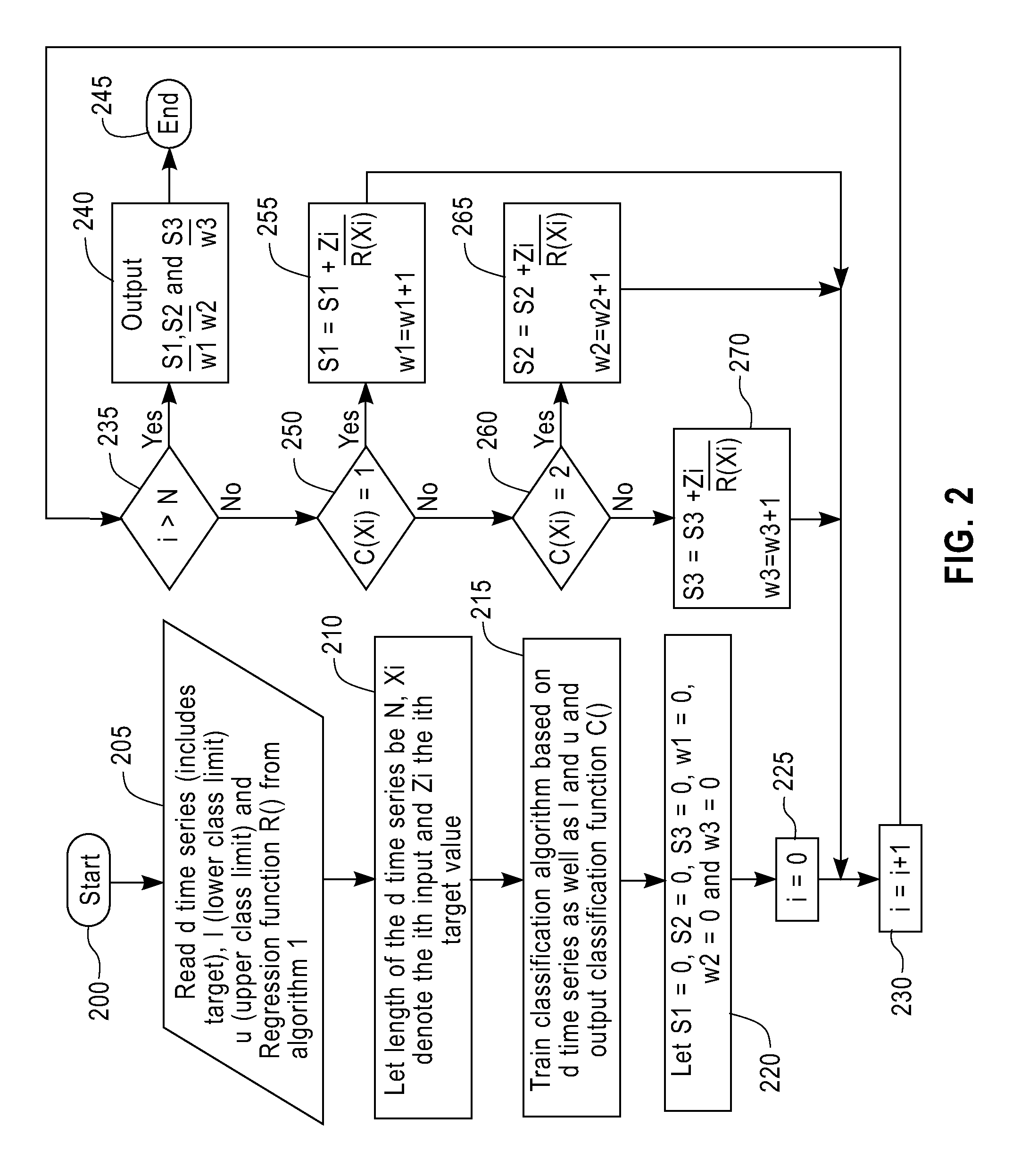Multi-step time series prediction in complex instrumented domains
- Summary
- Abstract
- Description
- Claims
- Application Information
AI Technical Summary
Benefits of technology
Problems solved by technology
Method used
Image
Examples
Embodiment Construction
[0029]FIG. 13 illustrates an environment 1300 where one embodiment of the present invention is employed. Upon receiving, from at least sensor (e.g., a sensor 1315, . . . , a sensor 1320, etc.) installed in a manufacturing or production environment 1310, time series data T1, T2, . . . , Td, a computing system 300 (e.g., a computing system 300 shown in FIG. 3) predicts Td as far ahead as possible from a time instant t, given other “d−1” input time series data and partial values of Td until time t.
[0030]FIG. 4 illustrates these received time series data (i.e., input time series) in one embodiment. In FIG. 4, the computing system predicts a region 400 with the question mark (“?”), given time series data T1 405, T2 410, . . . , partial Td 415, e.g., by running method steps described in FIGS. 1-2. FIGS. 1-2 are described in detail below. These time series data are not stationary and relationships between various time series data vary with time. Given a set of time series data from a manuf...
PUM
 Login to View More
Login to View More Abstract
Description
Claims
Application Information
 Login to View More
Login to View More - R&D
- Intellectual Property
- Life Sciences
- Materials
- Tech Scout
- Unparalleled Data Quality
- Higher Quality Content
- 60% Fewer Hallucinations
Browse by: Latest US Patents, China's latest patents, Technical Efficacy Thesaurus, Application Domain, Technology Topic, Popular Technical Reports.
© 2025 PatSnap. All rights reserved.Legal|Privacy policy|Modern Slavery Act Transparency Statement|Sitemap|About US| Contact US: help@patsnap.com



